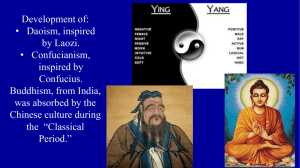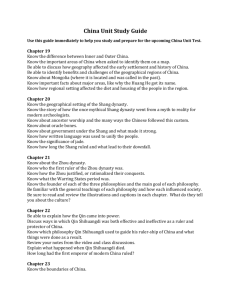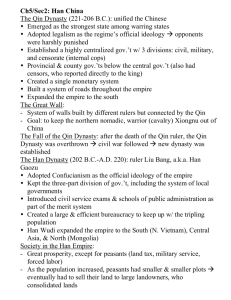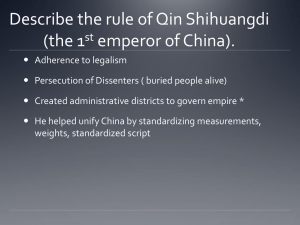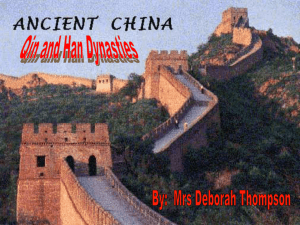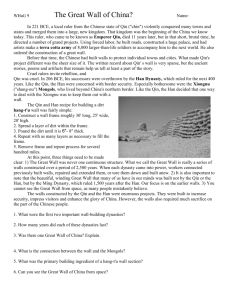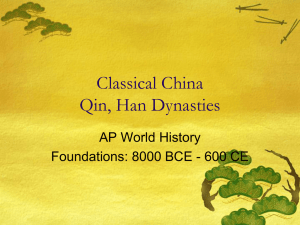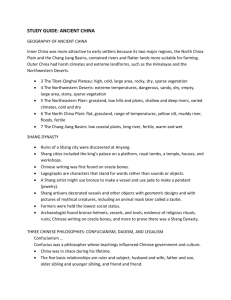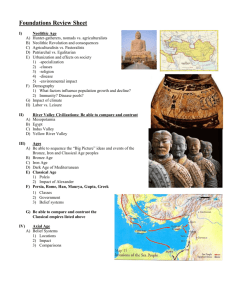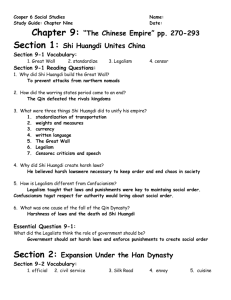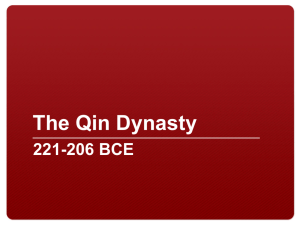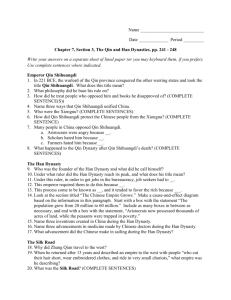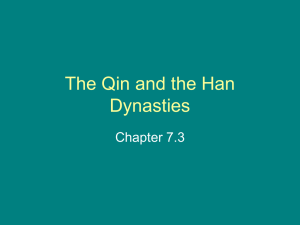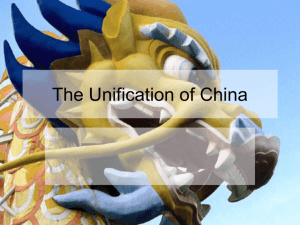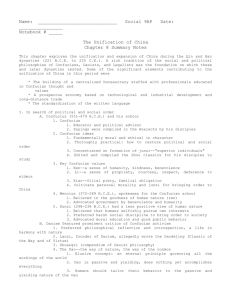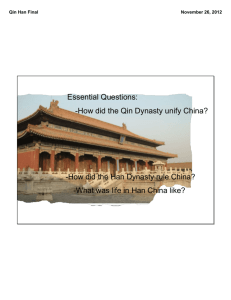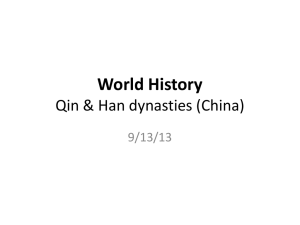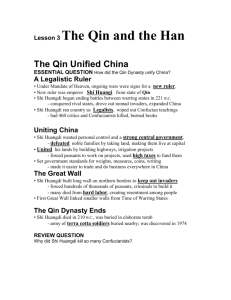File
advertisement
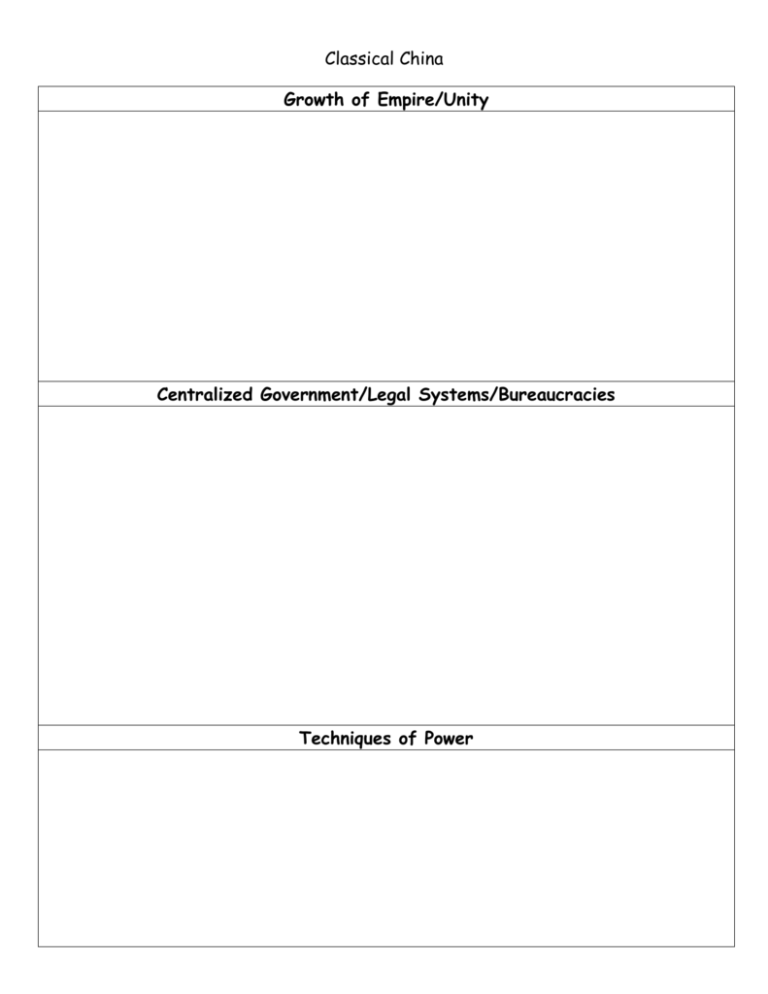
Classical China Growth of Empire/Unity Centralized Government/Legal Systems/Bureaucracies Techniques of Power Trade and Economic Integration Cities Social Structures Labor Systems Classical China Growth of Empire/Unity Qin extend China to the south after unification Han extend to Korea, Indochina, and Central Asia o Language helps unify Chinese—different dialect, but written Chinese the same (encourages cultural unity, unlike Roman with many languages) Qin also had book burnings and buried scholars alive—Tried to end the Hundred Schools of thought and Qin attempted to unify China after he took power by unifying thought and political opinion o Li Si (chancellor of Qin Huangdi) proposed to burn all history except Qin historians o Anyone who discussed the burned books would be executed and banished to work on the Great Wall o 450 scholars buried alive and some say as many as 700 o Some attribute the quick fall of the Qin these events When the Han came to power, they unify under the Confucian beliefs Centralized Government/Legal Systems/Bureaucracies Qin Dynasty 221 BCE to 206 BCE—lays foundation for unified China o Shi huangdi (first emperor) made a single law code for entire empire, established a uniform tax system, appointed governors to districts—very centralized rule Han Dynasty 206 BCE to 220 CE o Established effective bureaucracy, examination system (Confucian system—in use until 1912) o Schools taught Confucianism o Local governments handled judicial matters o Military not very strong o Sponsored public works (irrigation and canal systems) o Standardized currency Techniques of Power Qin—legalist doctrine (strong laws with harsh punishments), authoritarian—noble families must live at capital so he could monitor them o Joined all walls into one great defensive wall, eventually thousands of miles across northern China—did not keep out invaders, but demonstrated ability to mobilize people and resources Weaponry—develop better metallurgy, swords, daggers, spears, axes, crossbow triggers, shu (wooden clubs) Trade and Economic Integration Shi Huangdi standardized weights and measures Silk Road origins in Han Dynasty—7000 mile route china, Central Asia, Northern India, Parthian and Roman empires Han Wudi opens maritime routes to connect India Han Wudi sent Zhang Qian to establish contact with people outside China—went to India and eastern edge of Rome-led to founding of Silk Road Increased number of foreign merchants Silk invented and used for currency Cities Only about 10% of the population (1 out of 10 people) lived in cities Neatly laid out with main streets and alleyways--surrounded by a strong wall, made of earth and stone Cities were centers of government, education, and trade Social Structures Han China-three tiered system: Aristocrats and Bureaucrats (scholar-gentry class—large landholders) Skilled laborers (iron workers, farmer, etc) Unskilled laborers including servants Women subordinate to men—could gain power as a mother in law Oldest son most authority other than father, oldest son inherited it Sharp class distinctions in Chinese society lead to the collapse of the Han Labor Systems Manual labor saved after invention of the Lou Che, used for plowing and sowing Grew rice, wheat, and provided salt Wealthy Chinese accumulate land in large estates

